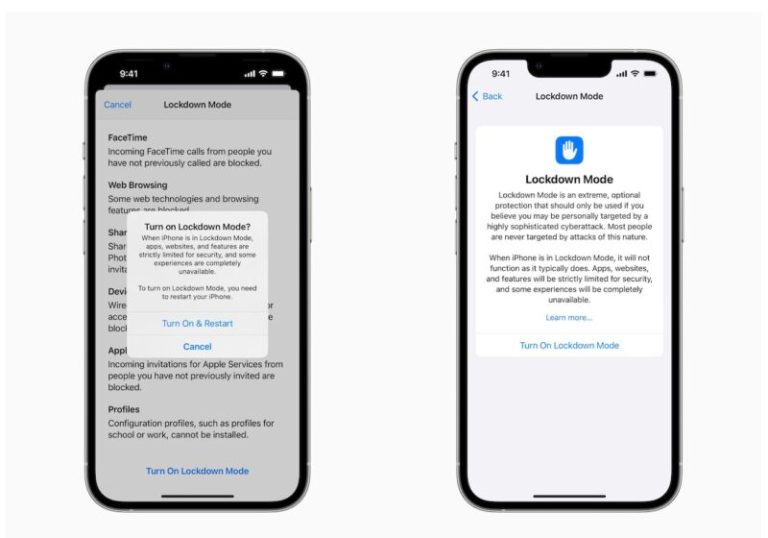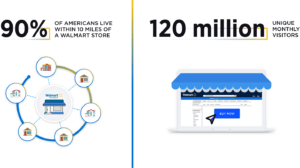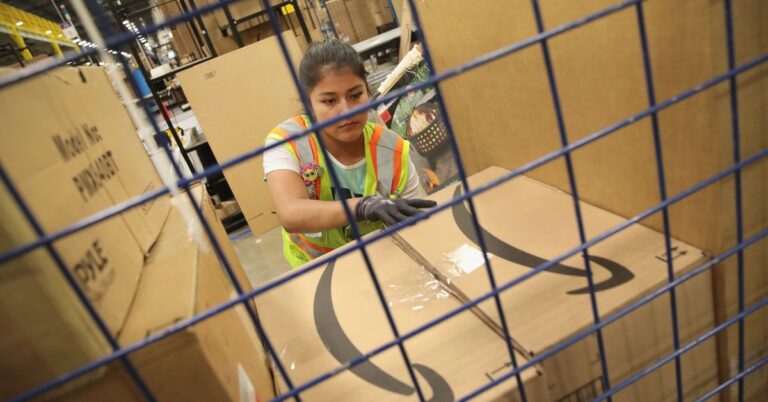Rapid growth in ecommerce sales and digital adoption across the globe opens up a world of opportunity for businesses looking to expand. The numbers alone make a compelling case: In 2021, ecommerce sales are expected to make up nearly 20% of total retail volume. By 2023, global ecommerce is projected to hit $6.2 trillion with the majority of retail ecommerce growth occurring in Latin America, Central and Eastern Europe, and the Middle East and Africa.
And it’s easy to see how this shift is occurring in real-time — new ecommerce customers are logging on every day. Take Europe, for example. In 2020, the digital adoption rate jumped from 81% to 95%. As people confronted new challenges brought on by the coronavirus pandemic, similar acceleration occurred worldwide.
The projected growth of ecommerce markets makes expansion more attractive than ever, with opportunities for businesses to tap into a new customer base, establish new partnerships, increase revenue and become a global brand.
So, considering the tremendous opportunities for growth, why don’t more businesses go global? There are some real barriers that keep businesses from branching out. Some of the ones companies frequently cite:
Localization. Website translation, adapting payment options and lack of market expertise — these are just a few of the obstacles of fitting into a new market.
Compliance. Navigating the tax considerations and regulatory environment in different jurisdictions can be highly complex.
Shipping and customs. Managing duties, tariffs and return costs often keep businesses from selling cross-border.
Accepting payments. Launching local payment methods requires months of work teams across your organization, including legal, business development, engineering, product and finance.
Managing customer support. Meeting customer expectations, generating word of mouth and protecting your brand from a distance requires some careful preparation.
For many businesses, the task of addressing all of these issues is daunting and cost-prohibitive. And the reality is going global is a major undertaking. Fortunately, you don’t have to go it alone. With the right partner and smart planning, you can successfully navigate these challenges.
3 Steps to Take for International Ecommerce Growth
There’s a lot to consider before you venture across borders. Following a basic strategy can help you take a careful, thorough approach. BigCommerce has partnered with Stripe, a global leader in payments infrastructure, because they enable businesses to accept payments in 195 countries and dozens of local payment methods when using Stripe on BigCommerce. Stripe recommends a three-step framework for going global that helps businesses think through their options and take smart steps toward international growth.
Step 1: Evaluate
As with any big adventure, a great tool to start with is a map. It might seem simplest to choose your closest neighboring countries or the most developed regions where ecommerce is already strong. But taking a broader sweep and evaluating markets around the world can help you identify your path to expansion.
Considering not only where the market stands today but where it’s headed can also help inform your decision. India, Brazil, Russia, and Argentina are projected to see 26% growth rates in ecommerce in 2021. Asia-Pacific alone will account for nearly 61% of all retail ecommerce sales worldwide compared to North America which will claim 20%. And as of 2021, 94% of the world’s internet users are outside the US. — so taking a careful look far and wide may lead you to greater growth potential.
Let’s look at some regions you might want to consider and the key numbers that will factor into your decision.
North America
- Canada
- $1.7 trillion GDP
- 37 million population
- $52 billion annual B2C ecommerce growing at 15% in 2020
- 83% credit card adoption, 86% smartphone adoption, with 33% of ecommerce flowing through mobile
Top countries in Europe, the Middle East and Africa
- The UK
- $2.8 trillion GDP
- $233 billion annual B2C ecommerce, growing 11% annually
- 55% buy online via mobile
- France
- $2.8 trillion GDP
- $106 billion annual B2C ecommerce, growing 13% annually
- 39% buy online via mobile
- Germany
- $3.8 trillion GDP
- $108 billion annual B2C ecommerce
- 50% buy online via mobile
Top countries in Asia-Pacific
- Australia
- $1.4 trillion GDP
- 13% ecommerce growth rate
- World leader in contactless payment adoption, with 4 out of 5 in-person payments
- New Zealand
- $205 billion GDP
- 10% ecommerce growth rate
- 91% internet adoption
- India
- $2.7 trillion GDP
- 1.4 billion population
- 26% ecommerce annual growth rate
- 43% buy online via mobile
- Indonesia
- $1 trillion GDP
- 269 million population
- 31% ecommerce annual growth rate
- Payments split: 35% cash, 42% bank transfer, 10% wallet, 5% credit card, 3% convenience store, 5% other
- Japan
- $5.2 trillion GDP
- 126 million population
- $183 billion B2C ecommerce, growing 7.7% annually
- 85% credit card adoption, 79% smartphone adoption, 42% of ecommerce flowing through mobile
Top countries in Latin America
- Brazil
- $1.9 trillion GDP
- 210 population
- 89% mobile adoption
- Mexico
- $1.2 trillion GDP
- 126 million population
- 34% ecommerce annual growth rate
As you’re taking stock of different markets, you’ll want to also compare and consider the following:
- Market size. What’s the ecommerce GDP in that particular country or region? What are the growth projections for that market?
- Market attractiveness. In a given market, how many customers fall within your target demographic? Is that number likely to grow? What are the country’s digital adoption and smartphone penetration rates? What is the competitive landscape?
- Ease of entry. When it comes to the logistics and costs involved with doing business, not all markets are created equal. You’ll want to be familiar with the following areas and how simple or complex each one is in your chosen new market:
- Localization requirements
- Data regulations
- Shipping partners
- Tax considerations
- Cross-border regulatory environment
After a thorough evaluation, you’ll be ready to make a strategic choice and start selling in a new market.
Step 2: Launch
Once you’ve chosen your new cross-border market, it’s time to launch. When you start doing business in a new country, it’s critical to ensure not only that you’ve chosen the right market, but your company is ready for cross-border transactions. To set yourself up for success, you’ll want to do the following:
- Offer local payment methods that are familiar to your customers. Payments are personal. Understandably, customers want to use payment options they know and recognize. Up to 16% of shoppers abandon their cart if their preferred payment method isn’t available. Sales data from Stripe found that of more than 6,000 businesses who sold to buyers in Germany, Belgium, Netherlands, Poland and Austria, on average saw a 40% lift in sales when they turned on European payment methods. If you’re working with BigCommerce and Stripe, you can easily turn these on with no additional work.
- Optimize your checkout flow. No matter where you’re doing business, friction chases customers away. And while your checkout may work without a hitch at home, it may be a trouble spot for customers in another country. Keep your checkout flow seamless with responsive forms that adapt to address formats across countries. And make sure your site offers dynamic, real-time confirmation of network acceptance across banking systems.
Some other crucial areas to pay attention to:
- Maintaining compliance with local regulations, including Europe’s General Data Protection Regulation and Strong Customer Authentication
- Managing taxes, especially Europe’s Value-Added Tax (VAT)
- Managing customer support
- Handling shipping and customs
Each of these issues can be highly complex for a business to navigate in a new region, but remember you don’t have to manage it all on your own.
Step 3: Optimize
After you’ve opened for business internationally, it’s time to refine your operations for optimal performance. Now you can focus on maximizing your revenue and minimizing costs.
Consider opening a local entity.
This option requires a big investment, but as your business expands, it’s something to think about. You can do a lot virtually, but having a physical location in the market you’re serving can help you further boost revenue and add local expertise to your team.
What’s the advantage to opening an on-the-ground local shop? First, there’s significant cost savings on transactions. Domestic card transactions have about 10% better authorization rates than cross-border transactions. And domestic transactions eliminate cross-border fees, which can save you more than 2% on a $100 transaction.
Another advantage is that by hiring regionally, you tap into local knowledge, experience and expertise, which can lead to better products and marketing. Ultimately, this can help your business establish deeper connections with customers and drive brand loyalty.
Wrapping up
Taking your business global is exciting and introduces immense opportunities for growth. But the challenges to venturing beyond your own borders aren’t insignificant. In fact, they can be highly complex and difficult to untangle.
The good news: BigCommerce and Stripe together are a great fit for ambitious businesses looking to expand. With the right partners in your corner, you can tackle those big next steps with confidence. To learn more, about how Stripe and BigCommerce work together, start your free-trial today.
![]()
![]()






